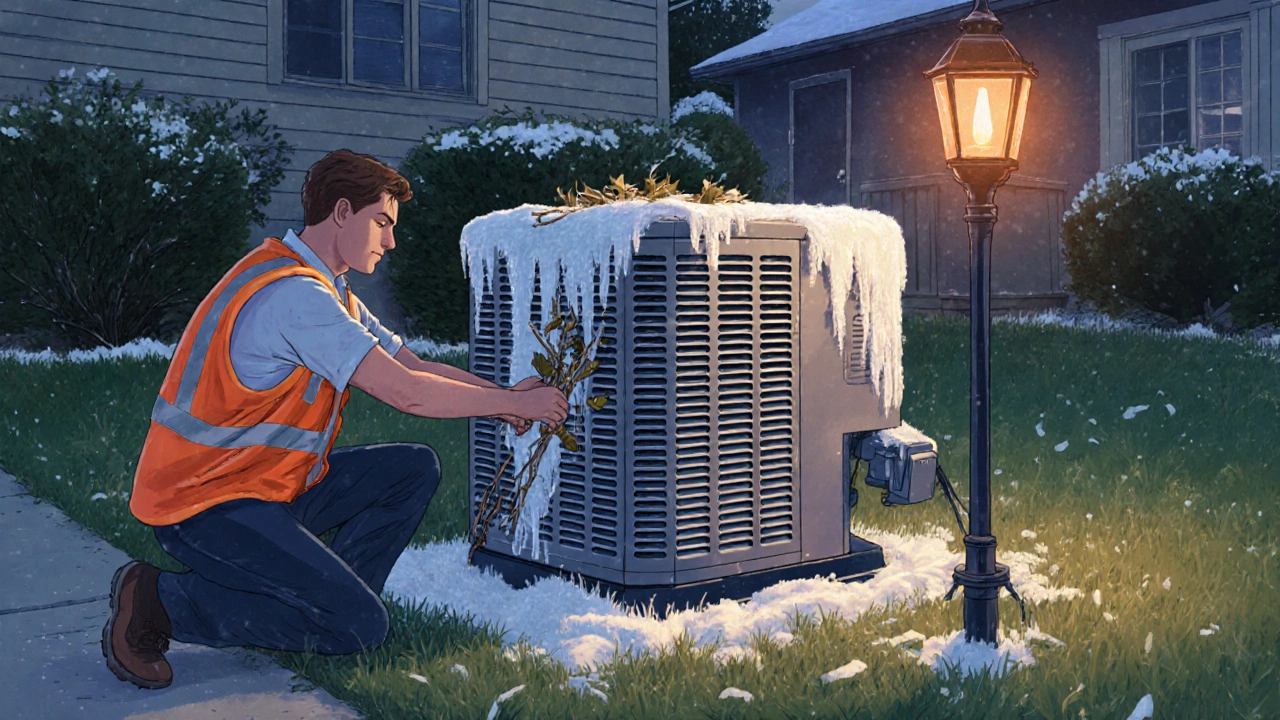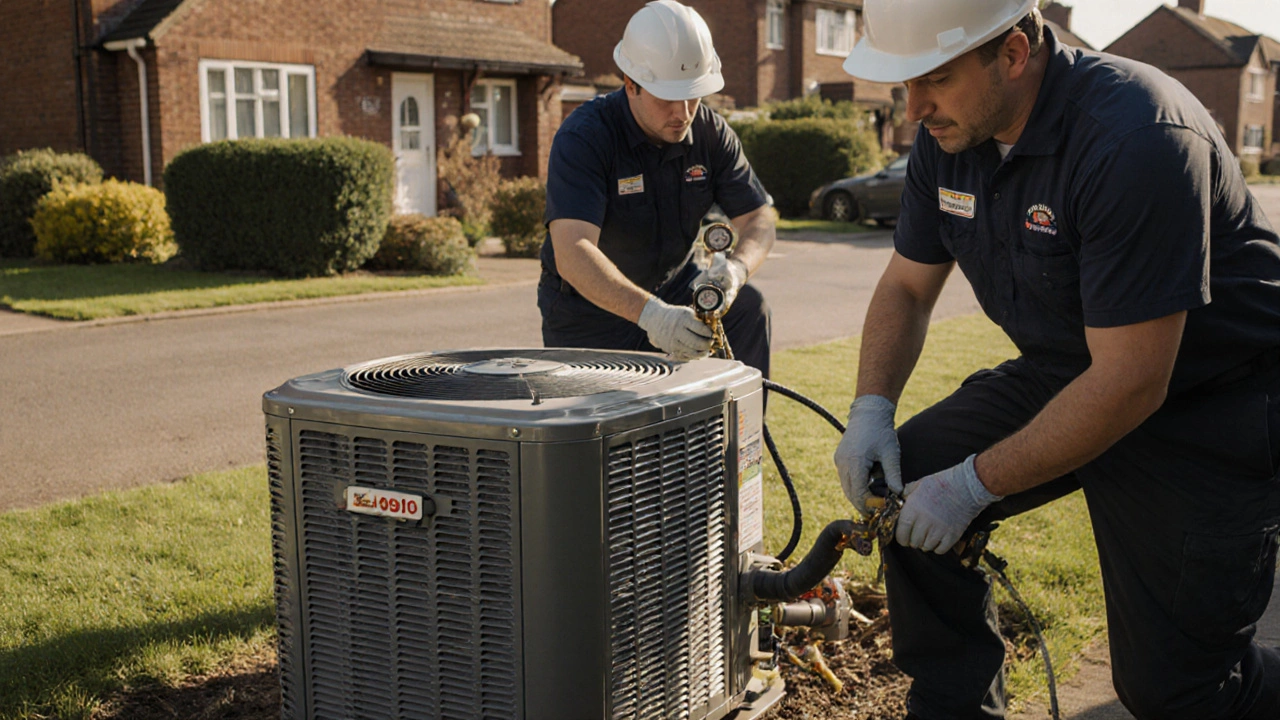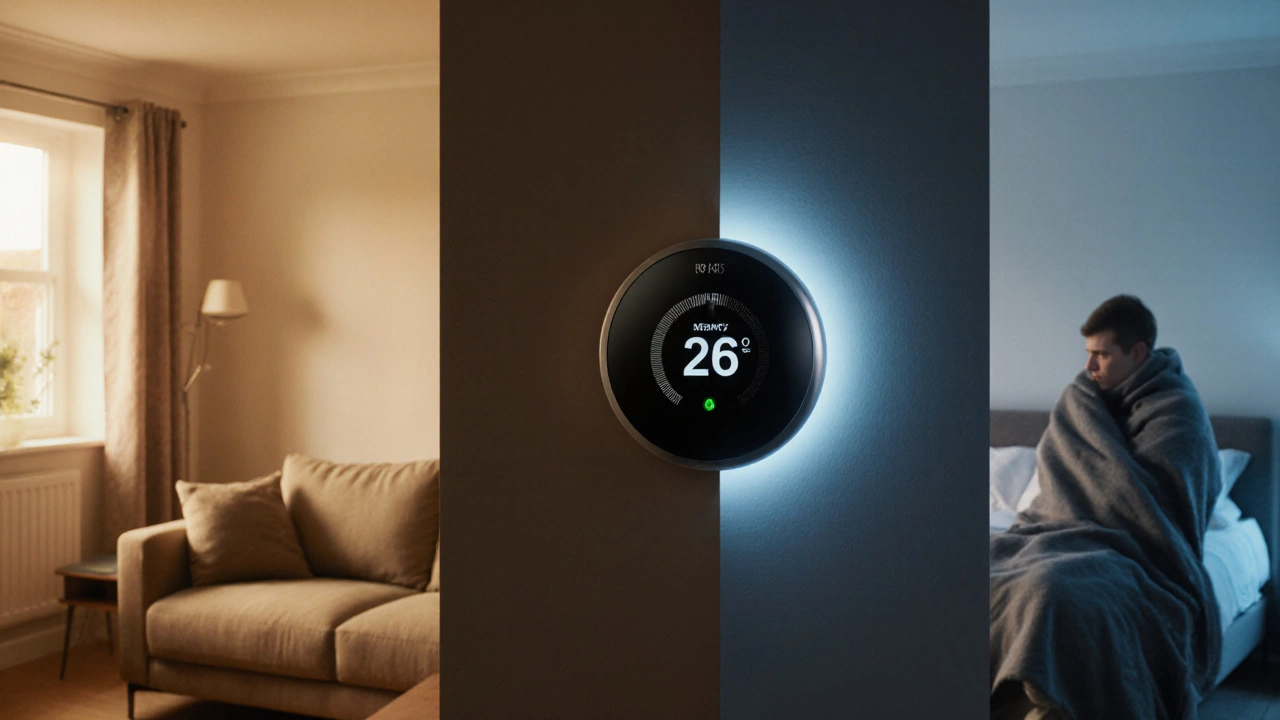Heat Pump Diagnostic Assistant
Symptom Checker
Select all symptoms you're experiencing. This tool will help determine if it's a DIY fix or requires professional service.
When the heat pump is a climate‑control system that moves heat rather than generating it stops delivering the comfort you expect, you’ll notice temperature swings, strange noises, or a higher energy bill. Knowing the red flags can save you a costly service call and keep your home cozy.
Quick Takeaways
- Watch for uneven heating, unusual sounds, or error codes on the thermostat.
- Check the outdoor unit for ice buildup, debris, and proper airflow.
- Measure refrigerant pressure only if you have the tools; low pressure usually means a leak.
- If the compressor hums but never starts, suspect a capacitor or overload protector.
- Call a certified technician when you see a refrigerant leak, burned wiring, or repeated start‑stop cycles.
Key Signs Your Heat Pump Isn’t Working Right
Even if you’re not an HVAC pro, a few visual and audible clues are easy to spot.
- Inconsistent temperature: Some rooms stay cold while others feel fine.
- Ice on the outdoor coil: A thin layer of frost is normal for a few minutes, but heavy ice that sticks together indicates a defrost problem.
- Strange noises: Screeching, grinding, or a rapid “click‑click” often points to a failing fan motor or loose belt.
- Higher electricity bills: If the system runs longer than usual, it could be fighting against a refrigerant leak or dirty filters.
- Error codes: Modern thermostat is the control panel that communicates with the heat pump will flash a code; check the manual for the meaning.

Common Causes Behind Those Symptoms
Understanding the usual culprits helps you decide whether a quick fix is possible.
- Refrigerant is the chemical fluid that absorbs and releases heat in the cycle low - leaks usually show up as reduced heating and ice buildup.
- Compressor is the pump that pressurizes refrigerant failure - you’ll hear a humming sound but no start‑up.
- Fan motor drives airflow across the outdoor coil wear - noisy operation or no airflow at all.
- Pressure switch protects the system from unsafe pressure levels tripping - the unit may shut off repeatedly.
- Dirty indoor coil is where heat is released into your living space - reduces efficiency and forces the system to work harder.
DIY Diagnostic Steps (Safe and Simple)
- Visual inspection of the outdoor unit: Turn off power, remove debris, and look for ice, oil stains, or obvious damage.
- Check the air filters: A clogged filter restricts airflow; replace or clean it.
- Listen to the fan motor: With the unit running, a squeal usually means a loose belt or worn bearing.
- Verify thermostat settings: Ensure the mode is set to "Heat" and the temperature is higher than the current room temperature.
- Reset the system: Turn the breaker off for 30 seconds, then back on to clear minor electronic glitches.
- Measure refrigerant pressure (advanced): If you have manifold gauges, compare readings to the manufacturer’s specs; low pressure suggests a leak.
- Examine the condensate drain: A clogged drain can cause the unit to shut down as a safety measure.
If any step reveals a broken component, cracked coil, or refrigerant leak, stop there and call a professional. Handling refrigerant requires certification.

When to Call a Certified Technician
Some problems are beyond a homeowner’s toolbox.
- Refrigerant leaks or low charge - needs proper recovery and recharge.
- Burnt or melted wiring inside the indoor or outdoor unit.
- Repeated short‑cycling despite clean filters and clear airflow.
- Faulty capacitor or overload protector - these parts store electrical energy and can be dangerous.
- Persistent error codes you cannot decode from the manual.
Most repair companies can give a quick remote diagnosis if you share the error code, but a hands‑on inspection is often required.
Maintenance Tips to Prevent Future Malfunctions
Regular care keeps the system humming smoothly for years.
- Schedule a professional tune‑up before the heating season - they’ll check refrigerant levels, electrical connections, and the defrost cycle.
- Keep the outdoor unit clear: at least two feet of space on all sides, trimmed shrubs, and seasonal cleaning.
- Replace air filters every 30‑60 days, or sooner if you have pets.
- Run the fan on “auto” rather than “always on” to let the system manage coil temperature.
- Check the condensate drain line annually; pour a cup of bleach solution to kill mold.
| Aspect | Normal | Problem Sign |
|---|---|---|
| Outdoor coil temperature | Warm to the touch | Ice buildup > 1 hour |
| Noise level | Quiet hum | Squealing or grinding |
| Thermostat display | No error codes | Flashing letters/numbers |
| Energy consumption | Stable bill | Spike > 20% without usage change |
Frequently Asked Questions
Why does my heat pump freeze up?
A frozen coil usually means the defrost cycle isn’t kicking in, often because of dirty filters, low refrigerant, or a faulty defrost timer. Clear any debris and check the thermostat settings first.
Can I add refrigerant myself?
No. Handling refrigerant requires certification due to environmental regulations and safety concerns. A licensed technician should recover, test, and refill the system.
What does a rapid clicking sound mean?
That’s often a pressure switch resetting. It may indicate low refrigerant pressure or a blocked airflow condition. Inspect the outdoor unit for ice or debris.
How often should I clean the outdoor unit?
At least once a year, preferably before the heating season. Remove leaves, vacuum the fins gently, and straight‑wash with a garden hose (no high‑pressure spray).
My thermostat shows an error code ‘E2’. What should I do?
E2 typically signals a communication fault between the thermostat and the indoor unit. Try resetting the thermostat, check the wiring connections, and if it persists, call a technician.
